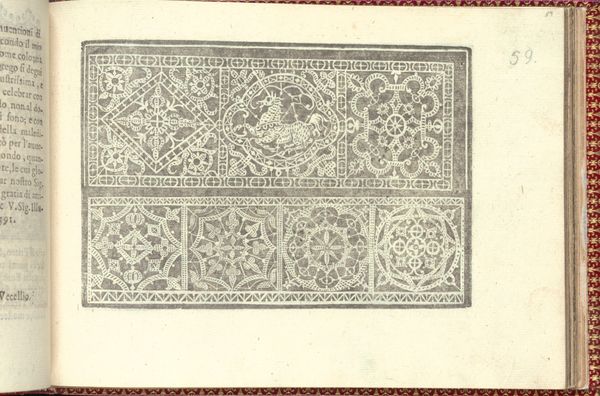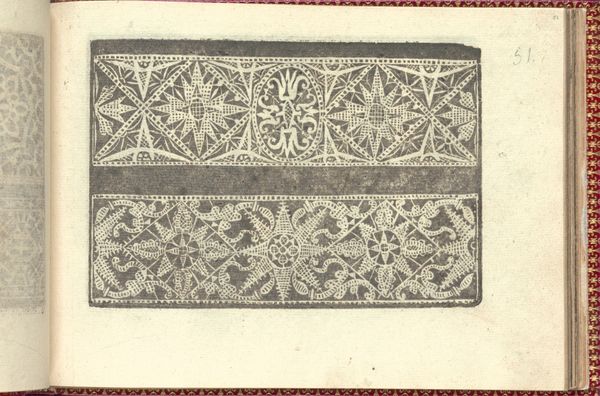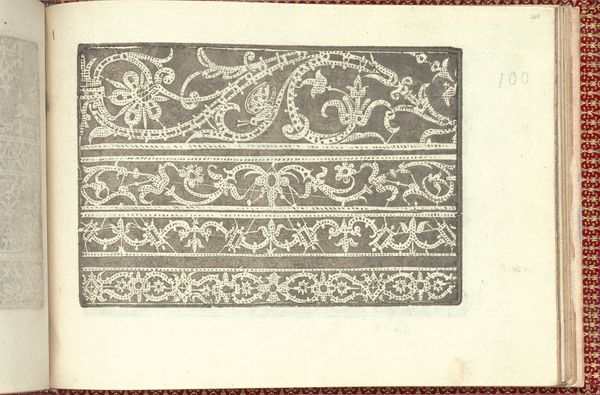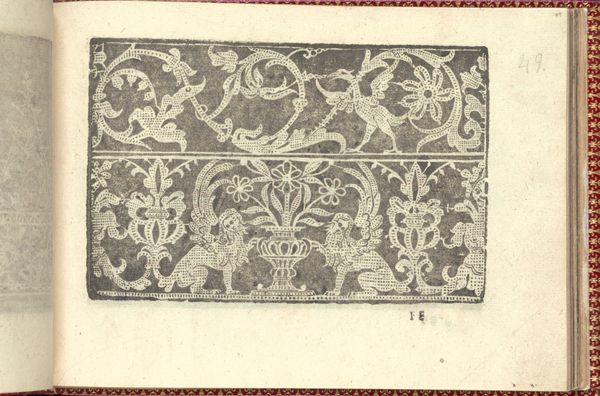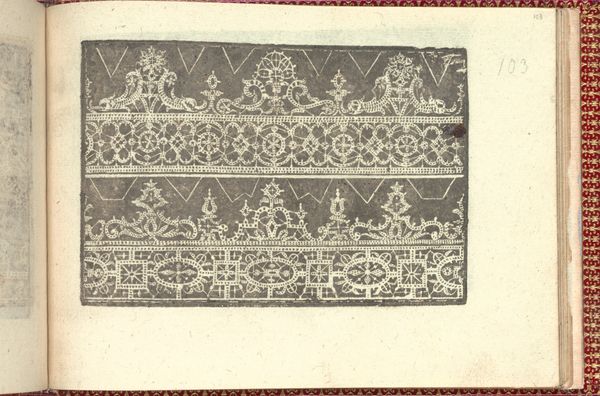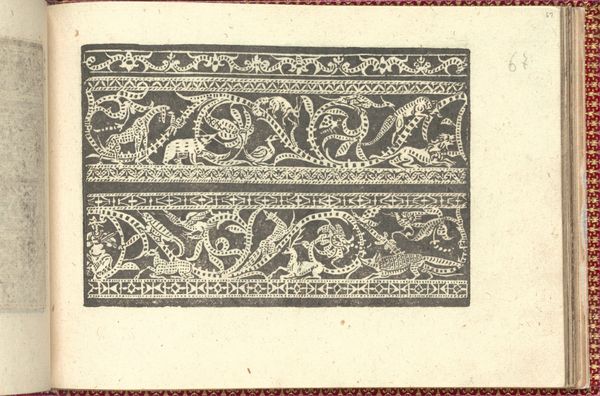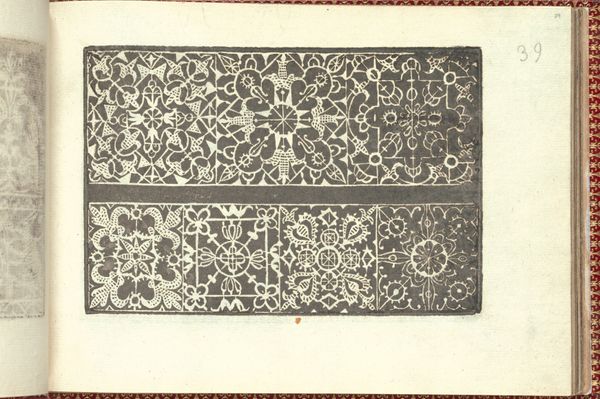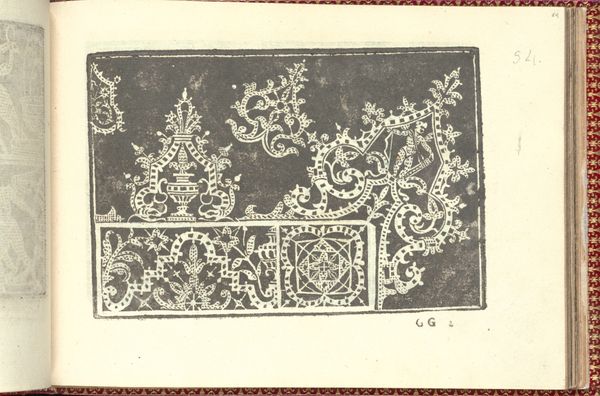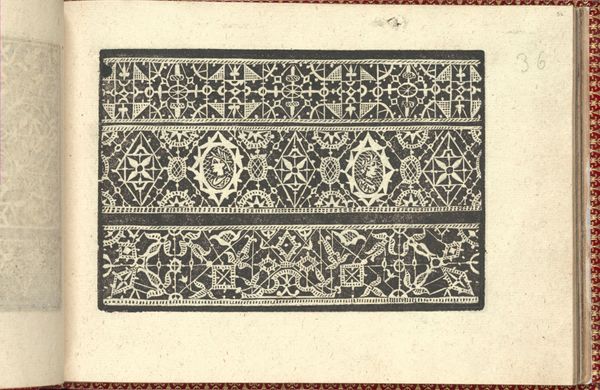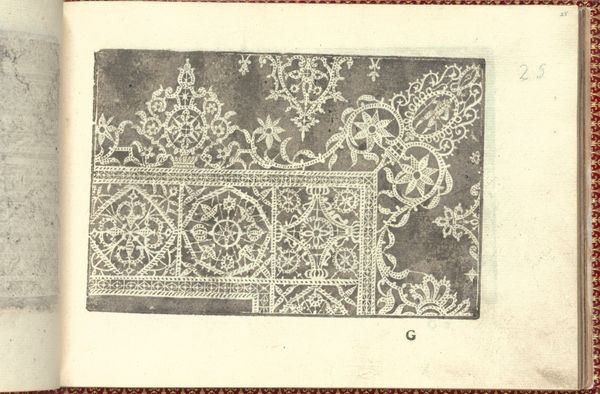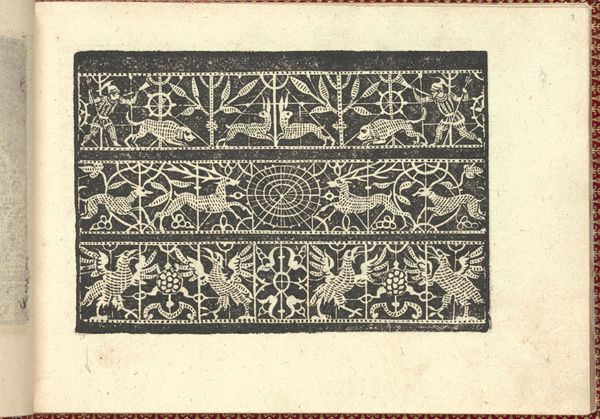
Corona delle Nobili et Virtuose Donne: Libro I-IV, page 60 (recto) 1601
0:00
0:00
drawing, print, engraving
#
drawing
#
medieval
# print
#
book
#
11_renaissance
#
engraving
Dimensions: Overall: 5 1/2 x 7 11/16 in. (14 x 19.5 cm)
Copyright: Public Domain
Curator: What do you see when you first look at this page? It’s from Cesare Vecellio’s *Corona delle Nobili et Virtuose Donne*, page 60, made in 1601. It’s currently held at the Metropolitan Museum of Art. Editor: I'm struck by this sense of infinite detail contained within a finite space. It feels almost meditative; the precision of each tiny shape… it's like looking into a kaleidoscope of history, you know? Curator: That's beautifully put. Vecellio’s “Corona,” is a compendium of sorts; a celebration and classification of female costumes and lace patterns, a real cultural artifact. These engravings are documents steeped in societal meanings, particularly around virtue and nobility as defined then. Editor: So it’s not just about pretty patterns? Curator: Exactly. Each element has weight. Note the symmetrical borders, and the bestiary below: griffins, vases, figures. This wasn't just aesthetic; these repeating images invoke social orders and symbolic associations – power, prosperity, skill. The drawing speaks volumes about how status and identity were constructed. Editor: The repetition, the little creatures, it feels like a proto-wallpaper design… like something William Morris would have tripped over with great excitement in a dusty archive. It’s amazing to think women wore these. Or made these! Were they aware they were walking around with encyclopedias of coded symbolism on their sleeves? Curator: Most definitely. Remember, textiles and attire were key signifiers. Craftswomen were powerful keepers and transmitters of visual language. This book ensured their designs were circulated even further. Editor: It gives me such respect for the craftsmanship—and also for the wearers. Each piece was a wearable text. Looking at it makes you wonder about the weight of such images. The original function, so precise. And then now—how different we perceive such things. Curator: I completely agree. Looking at the past allows you to gain insight on the continuity and changes in value. Something created as an explicit status symbol now triggers such a chain of introspective observations about time, perception, and identity… fascinating isn’t it?
Comments
No comments
Be the first to comment and join the conversation on the ultimate creative platform.
